9. Respiratory
1/55
There's no tags or description
Looks like no tags are added yet.
Name | Mastery | Learn | Test | Matching | Spaced |
|---|
No study sessions yet.
56 Terms
What is the difference between the upper and lower respiratory systems?
The upper respiratory system includes the nose, nasal cavity, and pharynx, while the lower respiratory system includes the larynx, trachea, bronchi, and lungs.
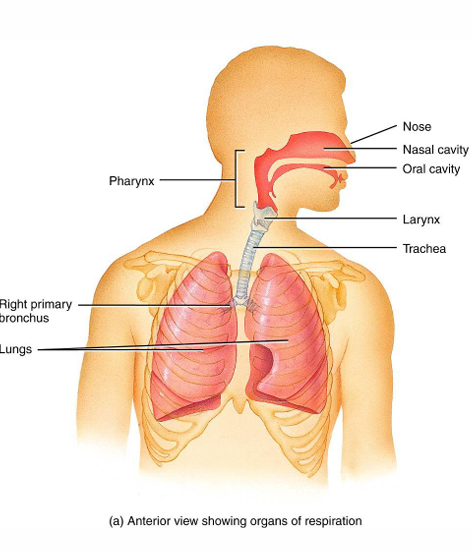
What are two functional zones?
The conducting zone includes the passageways that conduct air, such as the nose, nasal cavity, pharynx, larynx, trachea, and bronch
The respiratory zone is where gas exchange occurs, and it includes structures like the respiratory bronchioles and alveoli, where oxygen and carbon dioxide are exchanged between the air and the blood.
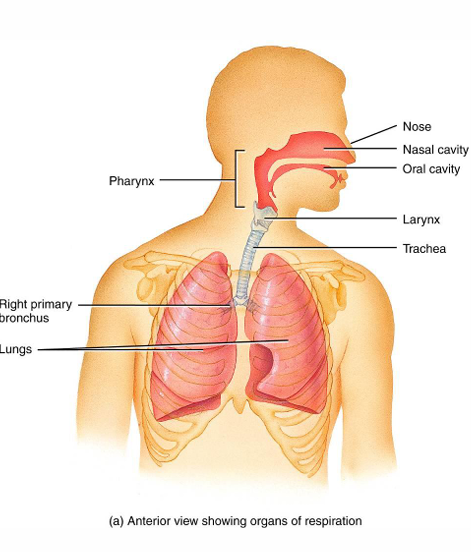
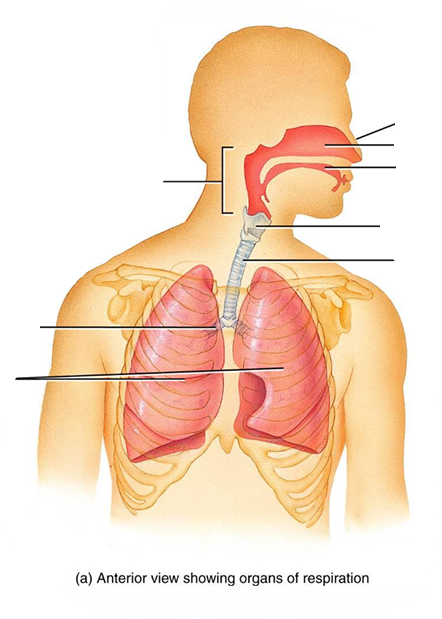
Name the different parts
Pharnyx (throat) and larnyx (voice box)
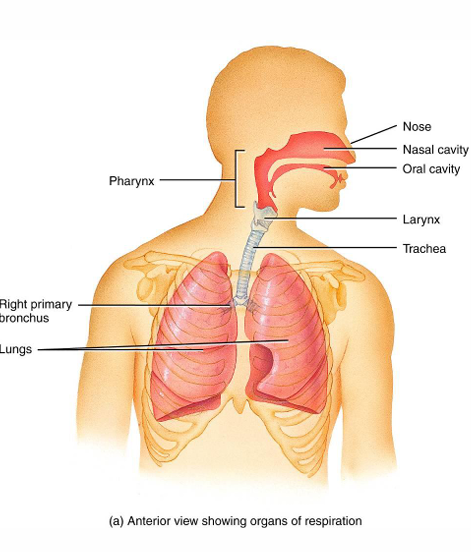
What are the three primary functions of the nose and nasal cavity?
The three primary functions of the nose and nasal cavity are to:
Warm and moisten the air.
Facilitate olfaction (sense of smell).
Assist in speech production.
What are the major structural components of the external part of the nose?
The external part of the nose is composed of skin, cartilage, and bone.
What are the major structural components of the internal part of the nose?
The internal part of the nose is composed of conchae (superior, middle, inferior), nostril (nares), vestibule, Sinuses (sphenoidal, frontal), pharyngotympanic tube, hard/soft palate, uvula, internal nares
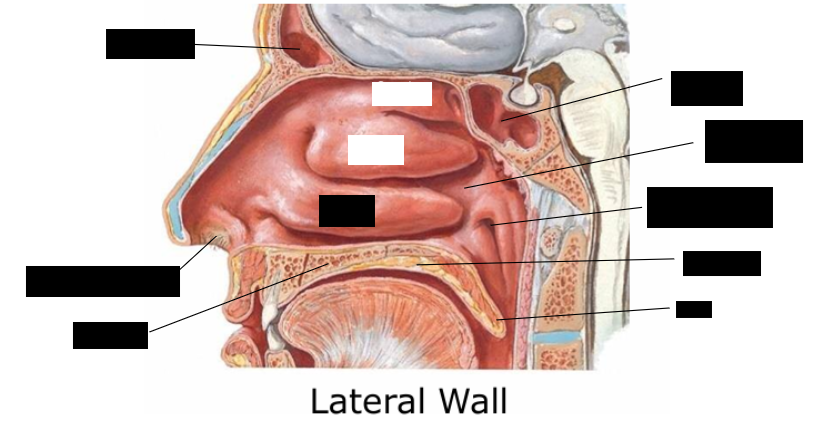
Name the different parts

What is the general structure and length of the pharynx?
The pharynx is a 13-15 cm long, funnel-shaped tube that connects the nasal and oral cavities to the larynx and esophagus.
What is the function and location of the nasopharynx?
The nasopharynx is located from the internal nares to the level of the soft palate. It is involved in the passage of air and serves as a part of the upper respiratory tract.
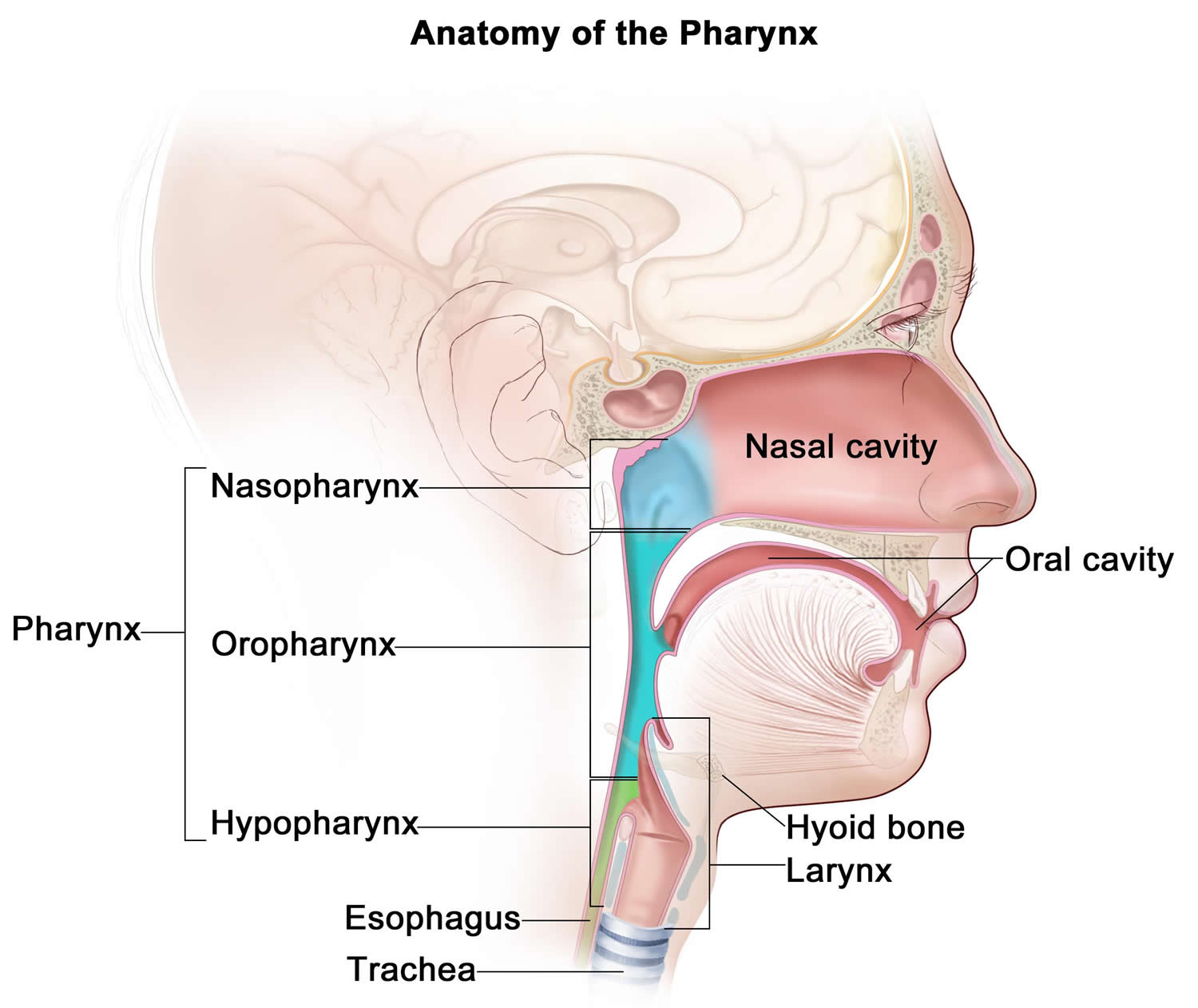
What is the role of the oropharynx and where is it located?
The oropharynx extends from the soft palate to the hyoid bone. It is a common passageway for both food and air, making it part of the digestive and respiratory systems.
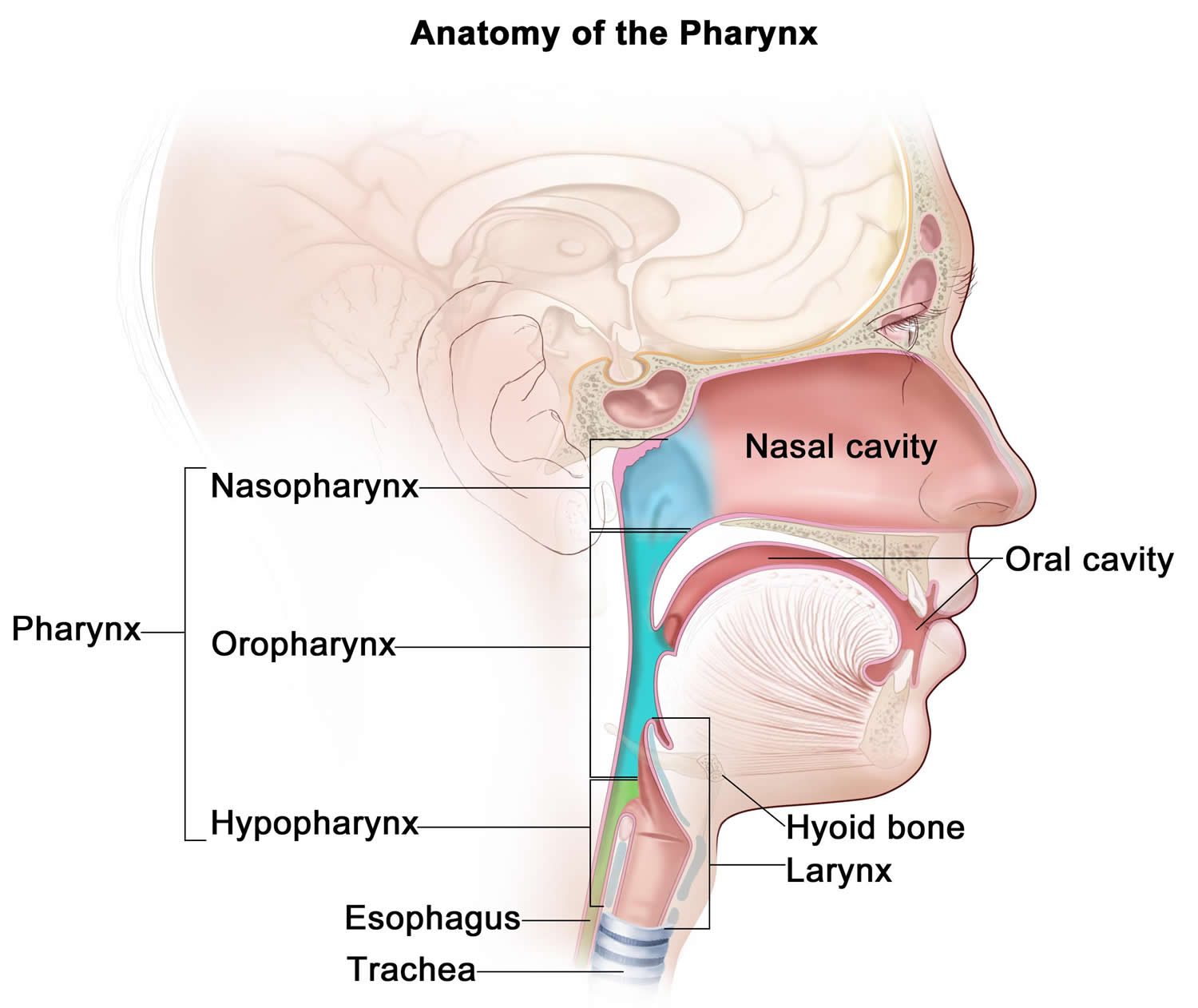
Where is the laryngopharynx located and what is its function?
The laryngopharynx is located from the hyoid bone to the larynx and esophagus. It serves as a passageway for food and air, directing food to the esophagus and air to the larynx.
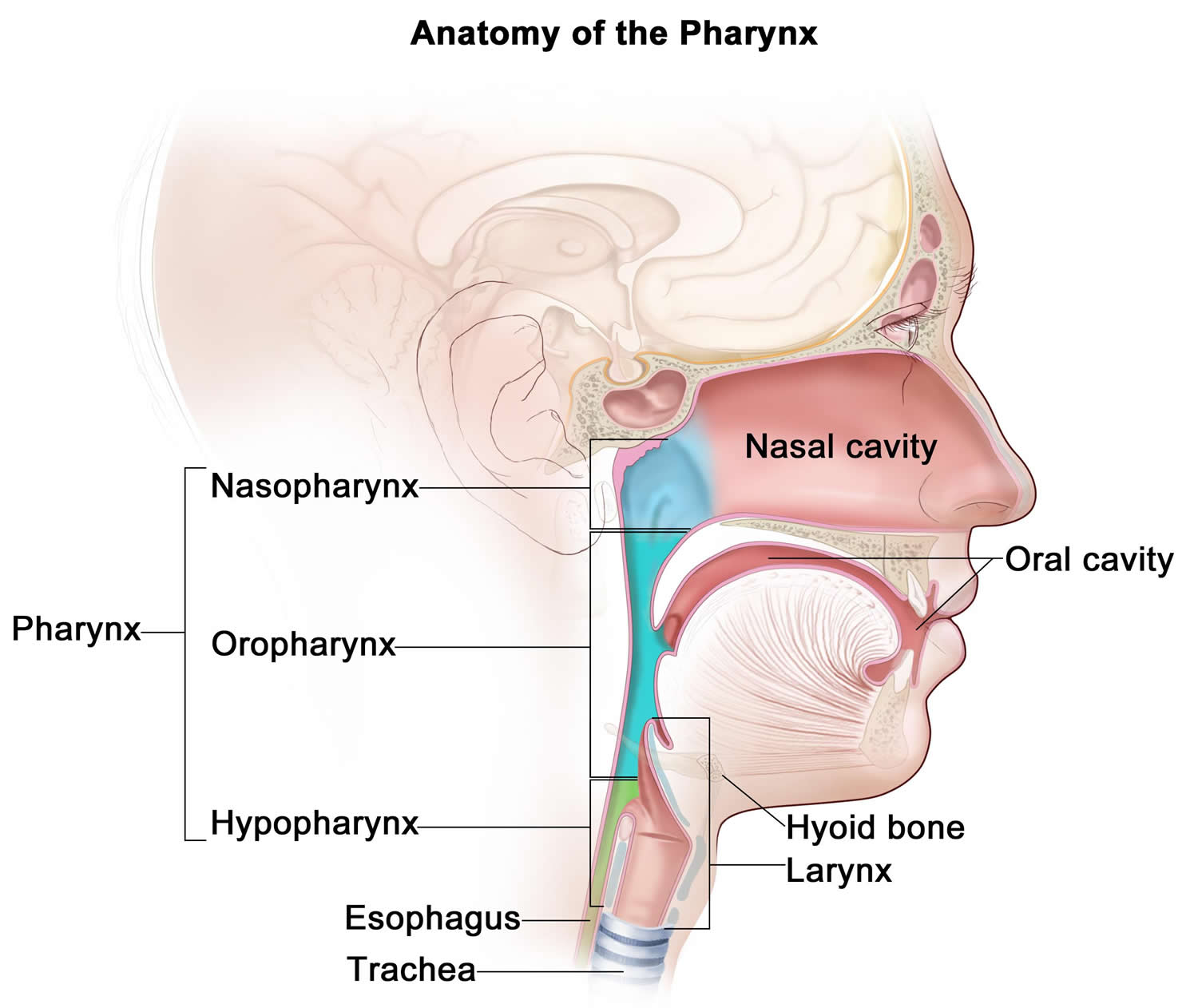
What anatomical structures does the larynx connect?
The larynx connects the laryngopharynx (part of the throat) to the trachea (windpipe).
Between which vertebral levels is the larynx located?
The larynx is located between the vertebral levels C4 and C6.
How many pieces of cartilage make up the larynx?
The larynx is composed of 9 pieces of cartilage.
What important feature is contained within the cavity of the larynx?
The cavity of the larynx contains the vocal folds (also known as vocal cords), which are essential for sound production.
What is the role of the intrinsic muscles of the larynx?
The intrinsic muscles of the larynx are responsible for adjusting the position and tension of the vocal folds, which controls the pitch and quality of the sound produced.
What is the function of the extrinsic muscles of the larynx?
The extrinsic muscles of the larynx help to stabilize and move the larynx as a whole. They support its position relative to the rest of the neck and help with actions such as swallowing.
What is the primary function of the vocal folds located in the larynx?
The primary function of the vocal folds is to produce sound. They vibrate when air passes through them, generating sound waves that are modified by the mouth, tongue, and lips for speech.
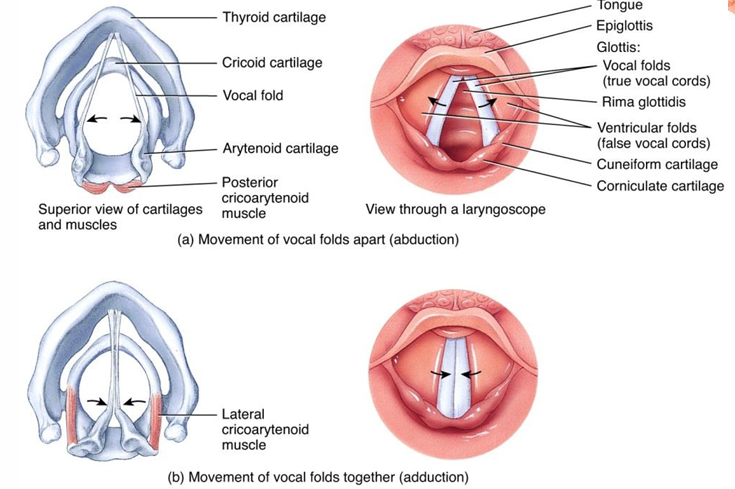
What is the difference between unpaired and paired cartilages in the larynx?
In the larynx, unpaired cartilages include the thyroid, cricoid, and epiglottis—each exists as a single structure. Paired cartilages, such as the arytenoid, corniculate, and cuneiform cartilages, come in pairs and work together to support the vocal folds and influence voice production.
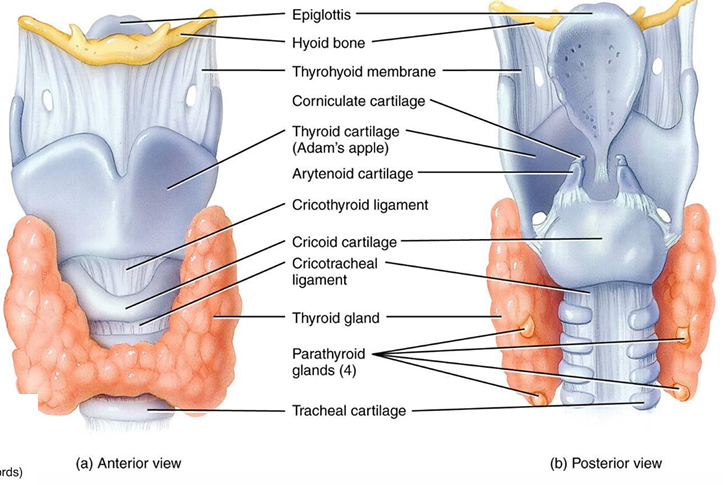
What is the length and diameter of the trachea?
The trachea is approximately 12 cm long and 2.5 cm in diameter.
Where is the trachea located in relation to the esophagus?
The trachea is located anterior (in front of) the esophagus.
From which structure does the trachea start, and at which vertebral level does it end?
The trachea starts from the larynx and extends down to the level of T5 (the fifth thoracic vertebra).
Into what two structures does the trachea split?
The trachea splits into the left and right bronchi.
How many cartilage rings are present in the trachea, and what tissue are they joined by?
The trachea has 16-20 incomplete rings of cartilage, joined by dense connective tissue
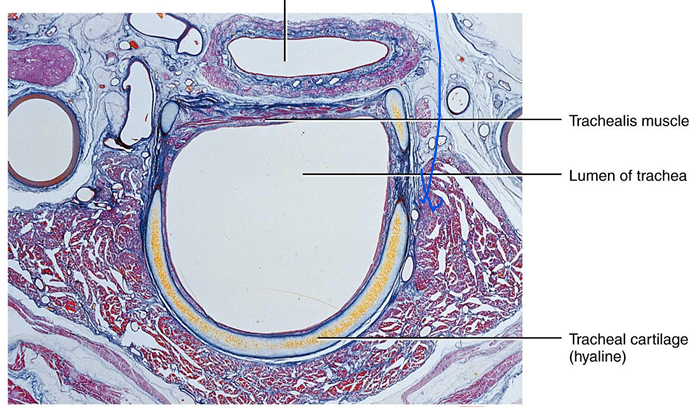
What muscle closes the posterior side of the trachea?
The trachealis muscle closes the posterior side of the trachea
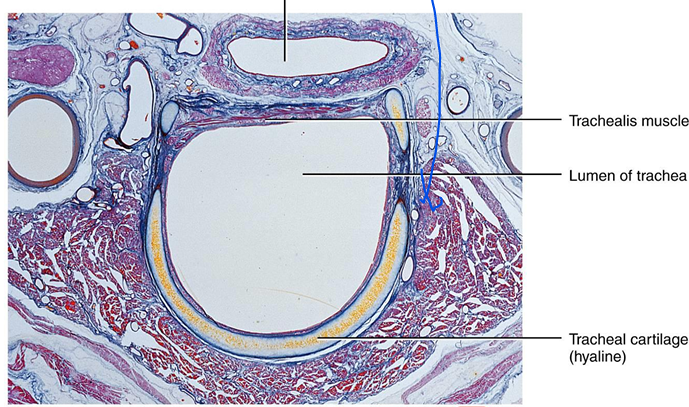
What happens to the diameter of the bronchi with each division in the bronchial tree?
With each division in the bronchial tree, the diameter of the bronchi is reduced.
How does the amount of cartilage change as the bronchi get smaller?
As the bronchi get smaller, there is less cartilage supporting them.
Why are smaller bronchi more at risk of bronchospasm?
Smaller bronchi are more at risk of bronchospasm because they lack supporting cartilage, which makes them more prone to narrowing.
How many orders of bronchioles can be found in the bronchial tree?
There are up to 14 orders of bronchioles in the bronchial tree.
Where does the conducting zone of the bronchial tree end?
The conducting zone of the bronchial tree ends at the terminal bronchioles.
What is the sequence of branching in the bronchial tree, starting from the trachea?
The sequence of branching in the bronchial tree is as follows:
Trachea → Primary bronchi → Secondary bronchi → Tertiary bronchi → Bronchioles → Terminal bronchioles
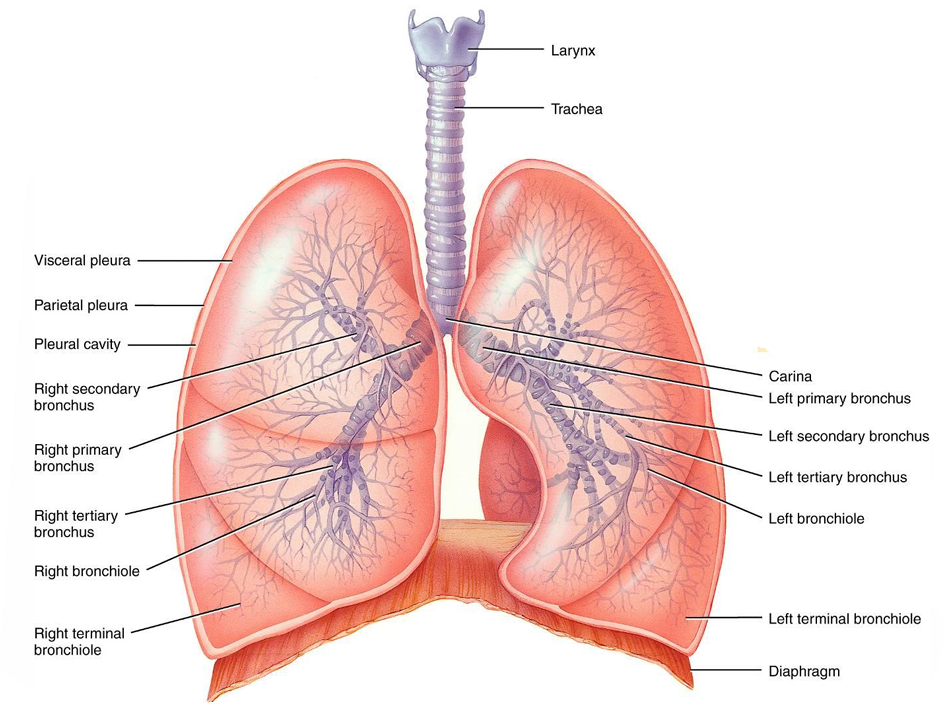
Where does gaseous exchange occur in the respiratory zone?
Gaseous exchange occurs in the alveoli.
What are alveolar sacs, and what is their function?
Alveolar sacs are clusters of alveoli that share a common opening into an alveolar duct, which helps with pressure equilibration.

What is the sequence of branching in the microscopic airway tree, starting from the terminal bronchioles?
The sequence of branching in the microscopic airways tree is as follows:
Terminal bronchioles → Respiratory bronchioles →Alveolar ducts →Alveolar sacs →Alveoli
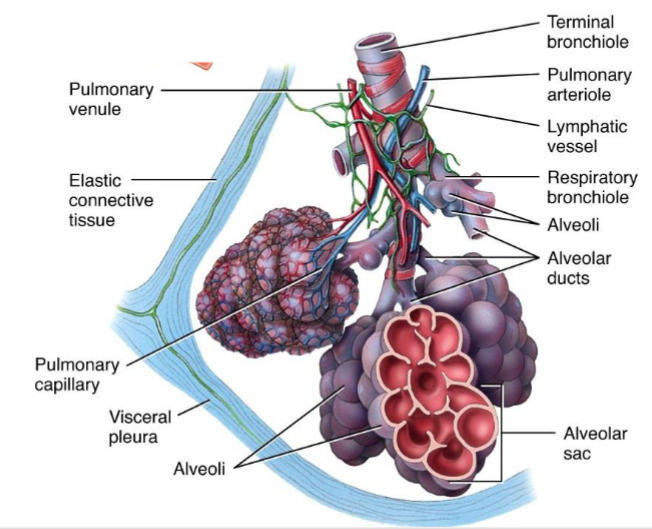
What types of cells make up the wall of an alveolus, and what are their functions?
The wall of an alveolus is composed of type I alveolar cells (site of gas exchange) and type II alveolar cells (which secrete alveolar fluid).
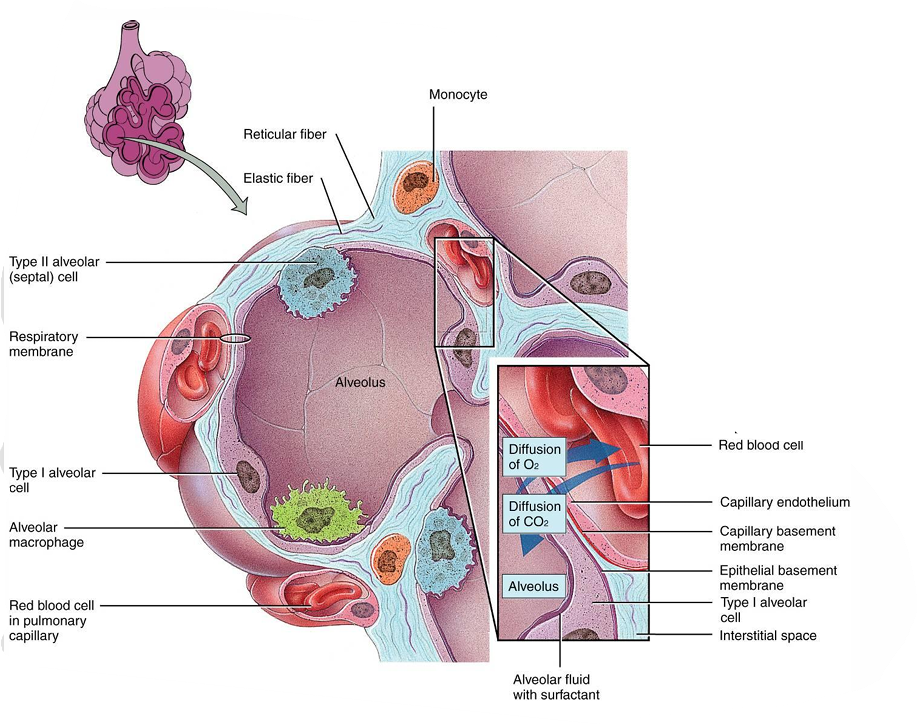
What is the role of alveolar fluid?
Alveolar fluid keeps the alveolar surface moist and contains surfactant proteins that reduce surface tension, preventing the alveoli from collapsing.
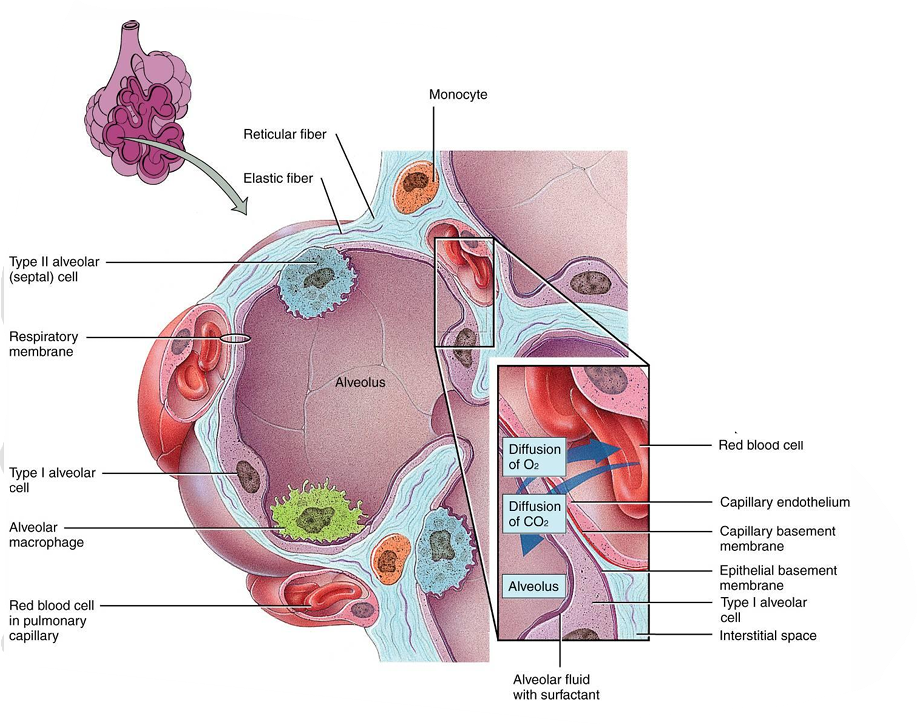
What is the function of surfactant in the alveolar fluid?
Surfactant reduces surface tension in the alveoli, helping to prevent their collapse.
Where does gas exchange occur in the alveoli?
Gas exchange occurs at the respiratory membrane, which includes the alveolar wall, basement membrane of the alveolus and capillary, and endothelial cells of the blood capillary.
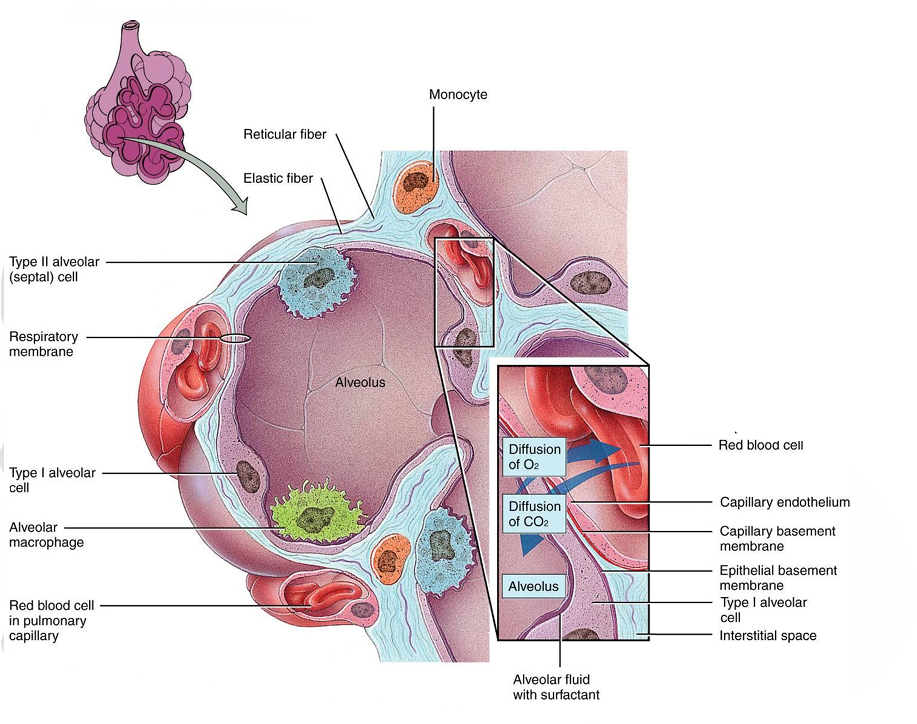
How much surface area is available in the alveoli for gas exchange?
The alveoli provide approximately 70 m2 of surface area for gas exchange.
What is the pleural membrane, and what is its function?
The pleural membrane is a double-layered serous membrane that covers and protects the lungs.
What are the two layers of the pleural membrane?
The two layers of the pleural membrane are the parietal pleura (outer) and the visceral pleura (inner), continuous with each other at point of origin
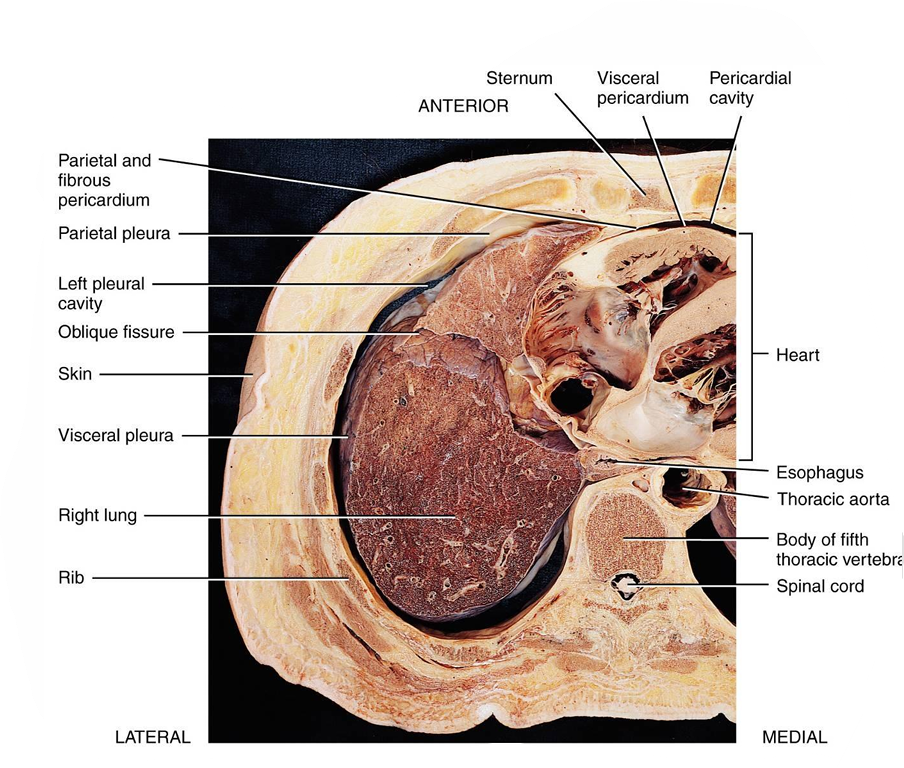
What is the pleural cavity, and what is its role?
The pleural cavity is the space between the parietal and visceral pleura, containing pleural fluid that reduces friction and allows smooth lung expansion and contraction.
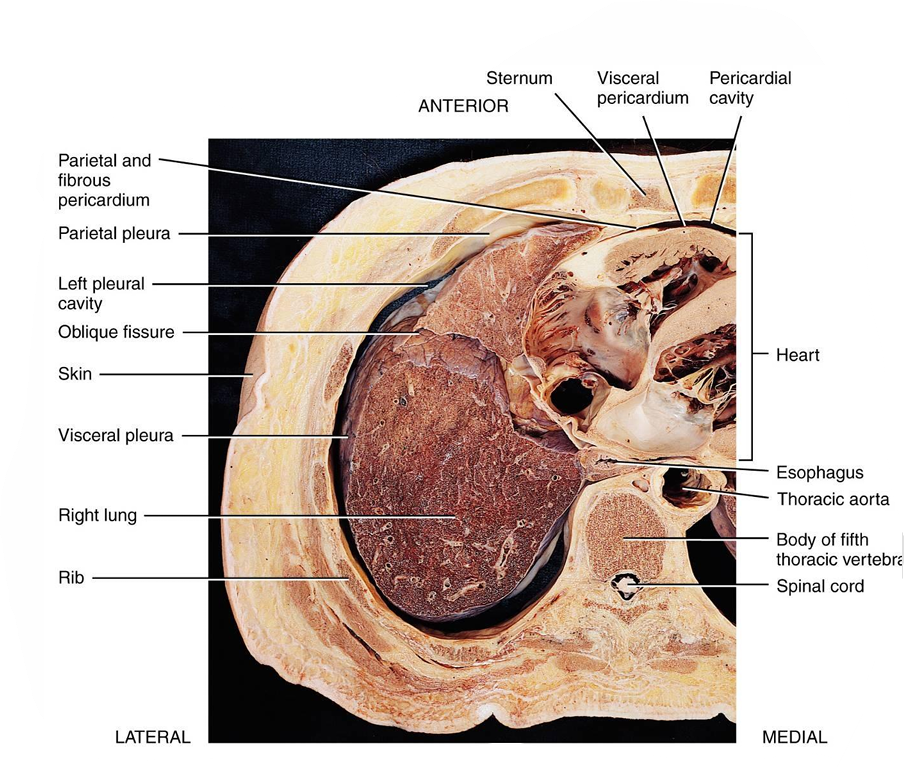
What are the main anatomical surfaces of the lungs?
The main surfaces of the lungs are the apex, base, costal surface, and mediastinal (medial) surface.
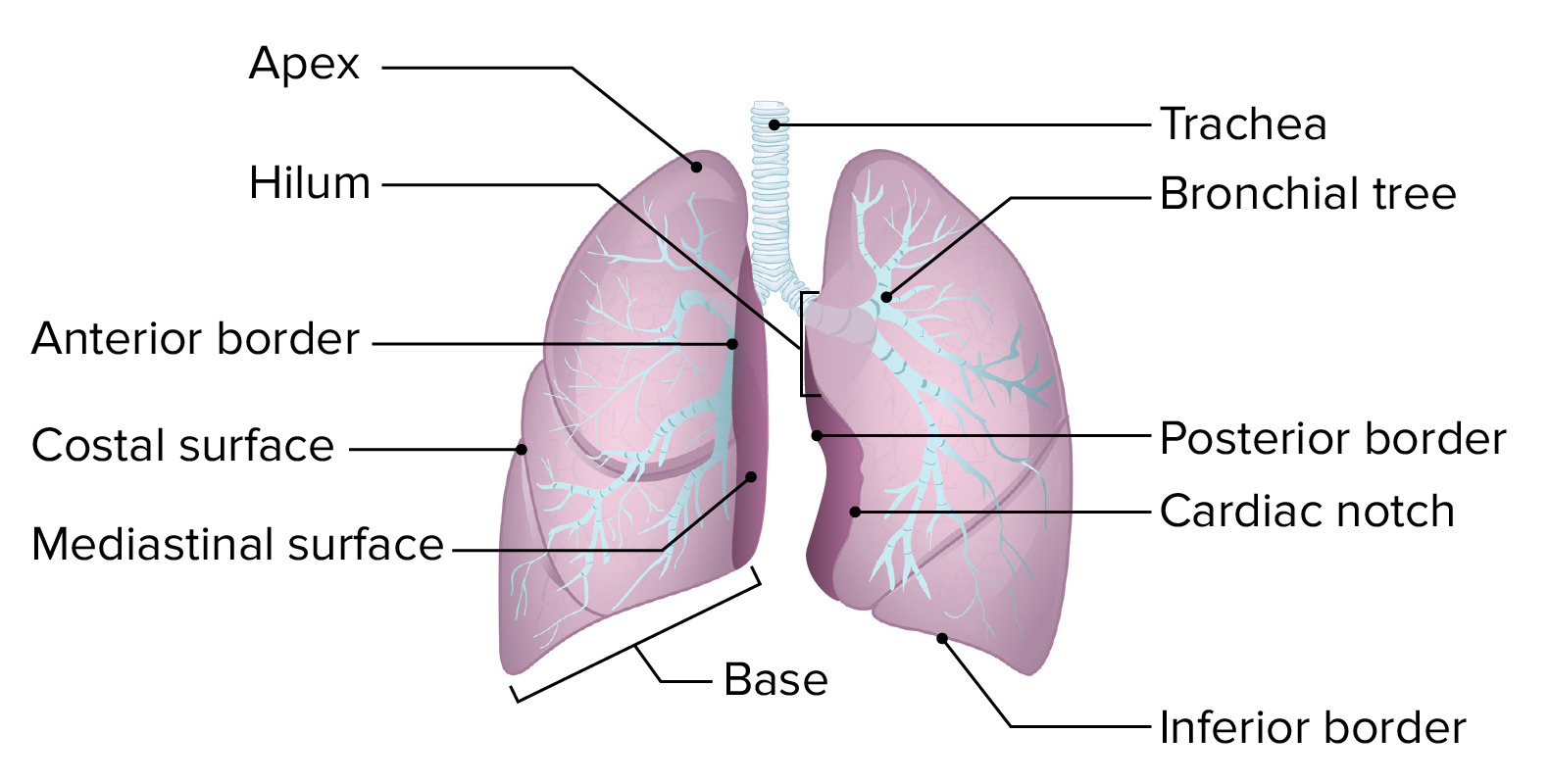
How many lobes does the right lung have, and what are they called?
The right lung has three lobes: the superior, middle, and inferior lobes.
How many segments and fissures does the right lung have?
The right lung has 10 segments and 2 fissures: the horizontal fissure and the oblique fissure.
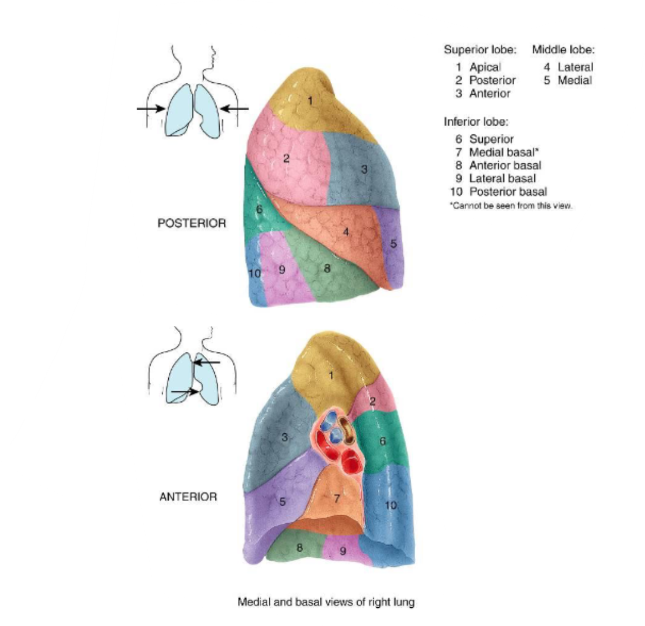
How many lobes does the left lung have, and what are they called?
The left lung has two lobes: the superior and inferior lobes.
How many segments and fissures does the left lung have
The left lung has 10 segments and 1 fissure: the oblique fissure
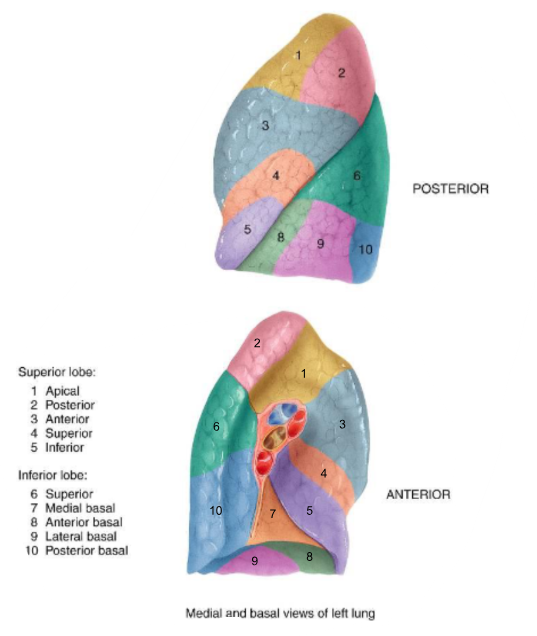
What unique feature is present on the left lung, and what is its purpose?
The left lung has a cardiac notch, an indentation that accommodates the heart.
What is pleural effusion, and what causes it?
Pleural effusion is the excessive production of pleural fluid, which can lead to difficulty breathing and lung compression.
What is pleurisy, and what is a common cause?
Pleurisy is the inflammation of the pleura, often caused by friction between the pleural layers, leading to sharp chest pain.
What is the difference between pneumothorax and hemothorax?
Pneumothorax is the presence of air in the pleural cavity, while hemothorax is the presence of blood in the pleural cavity, both of which can cause a partial lung collapse.
What causes asthma, and what part of the lung does it affect?
Asthma is caused by the contraction of the smooth muscle surrounding the terminal bronchioles, which narrows the airways and makes breathing difficult.
What is bronchitis, and how does it affect the respiratory system?
Bronchitis involves the excessive secretion of bronchial mucus, which can obstruct the airways, making it difficult to breathe.
What is laryngitis, and what causes it?
Laryngitis is the inflammation of the larynx, often caused by viral infections, leading to hoarseness or loss of voice.
What is emphysema, and how does it affect the lungs?
Emphysema involves the destruction of the alveolar walls, which reduces the lung's ability to oxygenate the blood, leading to difficulty breathing.
How does cancer affect the lungs?
Lung cancer typically causes tumor growth in the lungs, which can obstruct airways, damage lung tissue, and impair oxygen exchange.